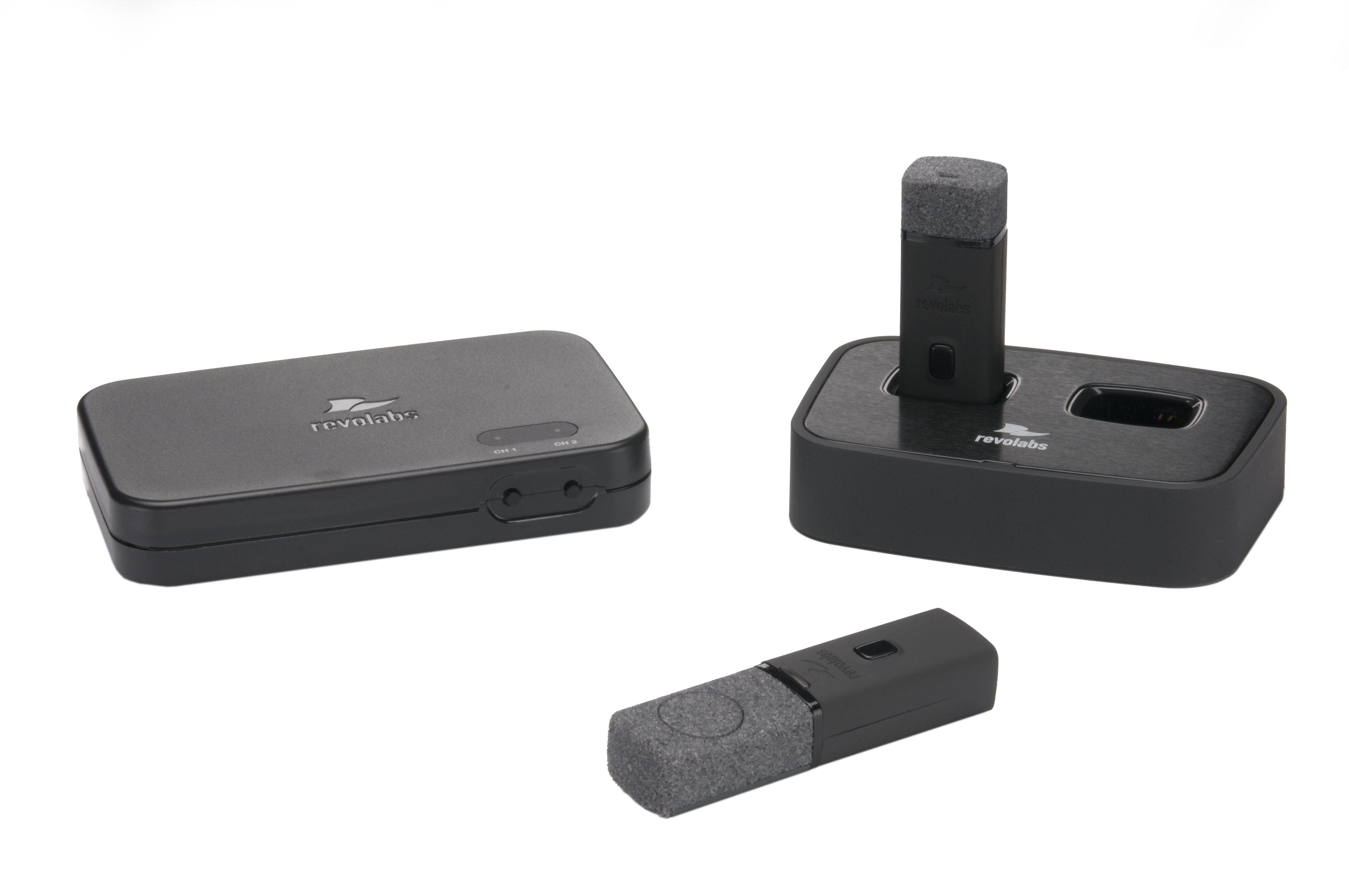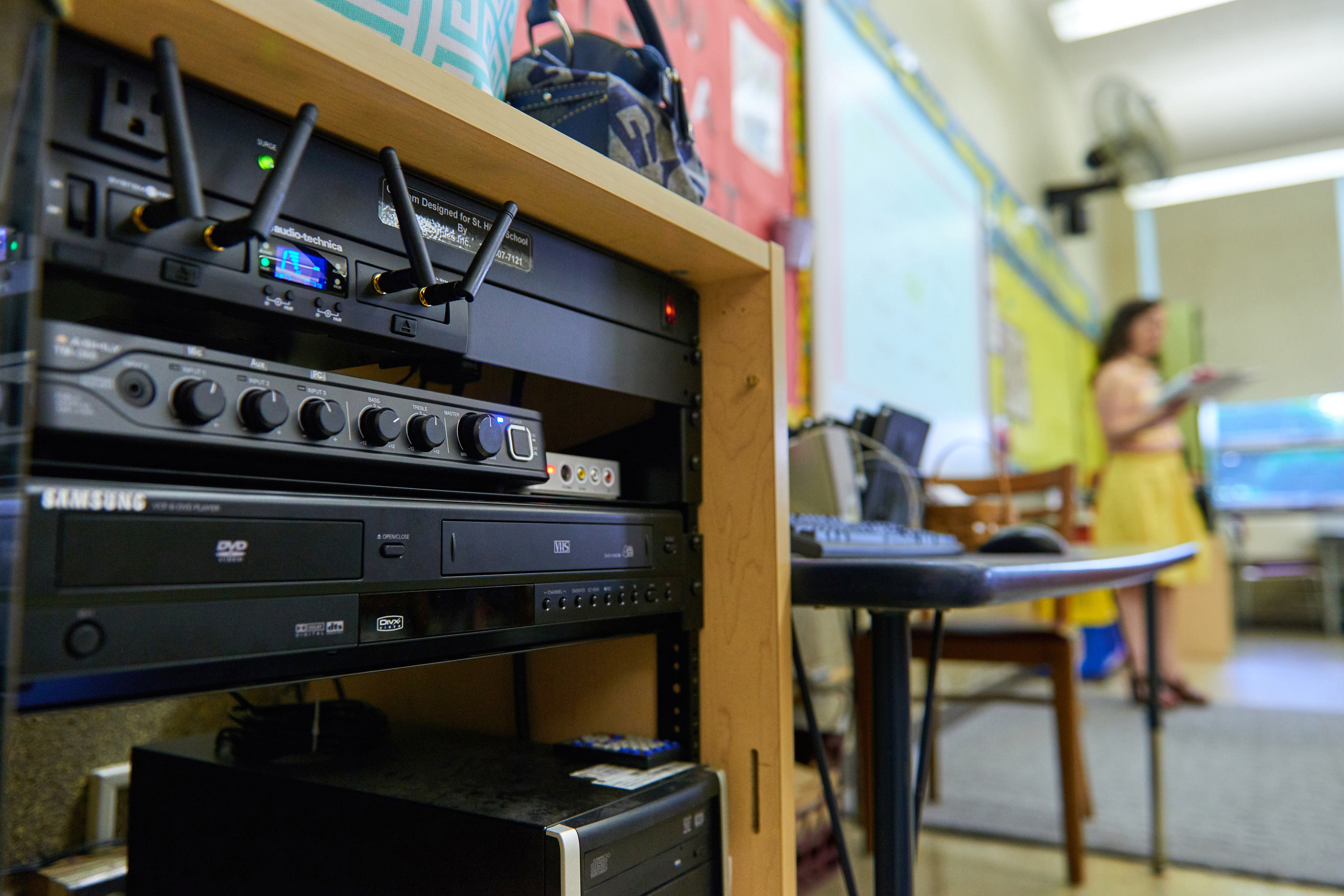The days of Ferris Bueller-style truancy are numbered. From college lecture halls to corporate training centers, the acceleration of AV capabilities means every student can see the professor perfectly, even if they’re at home with the flu, on another continent, or at a made-up relative’s funeral.
For those who can make it live and in person to connected classrooms, all the better, because now you can also hear the teacher like never before. For schools in a heated battle to boost enrollment, crisp audio is no longer being viewed as an elective. “Today, a modern classroom is the hallmark of a modern university,” said Andy Niemann, director of business communication, Sennheiser. “Research says that by 2025, more than 100 million students globally will go to a university. Universities are investing millions of dollars in upgrading their AV technology, and the role of audio has not only evolved for users but also for the people managing the technology.”
“Another growing area is remote teaching. Collaboration tools enable lecturers to reach out to students at home or allow several lecture halls to be connected with each other, for example, for compelling guest lectures. Remote conferencing technology helps to bridge distances and allows students to dial in from wherever they are. Teaching and knowledge transfer should therefore not be hindered by language or intelligibility barriers. In the age of globalization, translation services include international students; assistive listening technology includes students with hearing or visual impairments. Speech intelligibility itself is key—the better the audio quality, the easier students are able to follow the subject matter.”
In addition to aiding speech intelligibility, quality classroom audio reinforces media playback and emergency messages. Besides paying off in real time, audio best practices pay off long after the fact when lectures are recorded for future use as online learning tools.
“Nowadays, classroom materials are being recorded and then shared online, enabling students to reference the content after the event,” said Phil Stanley, regional sales manager, Northern Europe for Revolabs. “However, capturing video and lecture content without audio can render the recording useless. That’s why lecture-capture recording—bringing recorded sound together with lecture content and video into one cohesive piece—is one of the biggest areas of growth we see for audio in the classroom.
“Most students nowadays are paying for their own education, so universities are working hard to deliver a high-quality audio experience to ensure students are getting a good value. From the faculty’s point of view, if they are using microphones for voice lift applications, it’s helping them deliver a clear and proper message to the students. It’s also helping them deliver high-quality lecture recordings for the students to go back and review.”

AV integrators who are tackling classrooms and academic lecture halls need to treat them as a different beast than facilities that may seem to have some similarities, like conference rooms. “The classroom requires more versatility in a sound system,” said Gary Dixon, CTS, senior applications engineer, professional markets, for Audio-Technica. “Local media reinforcement, voice reinforcement, public address/emergency announcement reinforcement, and connectivity of other devices are all elements that have to be considered. Designing in versatility and quality can be a challenge within a budget set by the administration.”
Size matters when spec’ing out academic spaces like lecture theaters, calling for the deployment of distinct technology—and a lot more of it. “Classrooms and lecture theaters rely heavily on two things,” Revolabs’ Stanley said. “One is voice amplification, so students at great distances from the front can hear clearly, and so instructors and other students can hear when someone asks a question. Next is the quality of the audio capture for recording. For those reasons, classrooms need a different type of microphone than conference rooms. In the classroom, clip-on and hand-held mics are the norm, while in conference rooms, you see a lot of ceiling microphones, wireless table mics, and wired in-table mics.”
“While the trend of long-distance learning has arrived in education and is clearly a growth area, classrooms are still predominantly used for ‘live’ lectures,” Niemann pointed out. “Conference rooms, however, have almost fully transitioned to accommodating remote meetings over Skype for Business or similar conferencing solutions. Also, microphone management is often easier in conference rooms than at universities, where more microphones are distributed throughout lecture halls and classrooms. Software like Sennheiser Control Cockpit, which makes microphone management a lot easier, is a clear asset here.”
There are many signal path points that AV integrators must consider for optimizing audio, but the microphone is the first line of defense. “What you lose in the beginning cannot be compensated for by algorithms later,” Niemann said. “A quality microphone optimized for highest speech intelligibility, such as the Sennheiser SL Headmic 1, will provide consistently clear input. Moreover, a great audio experience is not only determined by the quality of the capture but also by the usability of devices. Integrators need to bear in mind that the best microphone does not help at all if people are not willing to use it. User-friendliness and product appeal are key in this respect. With SpeechLine Digital Wireless we offer a solution that has been fine-tuned to speech applications, with dedicated capsules and audio algorithms for optimum speech capture. In addition, this wireless microphone system is as easy to use as a clicker for presentations.
“Adaptive beamforming microphones such as TeamConnect Ceiling provide alternative options for multipurpose rooms. Unobtrusively mounted to the ceiling, TeamConnect Ceiling automatically places the current speaker in focus, no matter whether they are sitting at a table or moving about the room during a lecture or presentation.”
If delivery of audio anywhere is the goal, clear communication between integrator and institution becomes key. “How the audio and video get delivered across the world comes down to the videoconferencing platform, as well as the networks and audio distribution being used in the building or throughout the campus,” Stanley said.
For staying on top of such a deep topic, Audio-Technica’s Gary Dixon offered AV professionals some fitting advice: Stay in school. “Integrators can improve their skills by attending continuing education courses offered in this industry,” he said. “Also, integrators must remain open to new technologies on the market and not settle for a solution because it has worked in the last project. Each project is unique and requires a slightly different approach to be successful.”
David Weiss (dwords.com) writes extensively about AV, audio, and broadcast technology.
